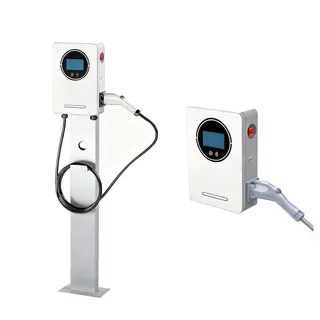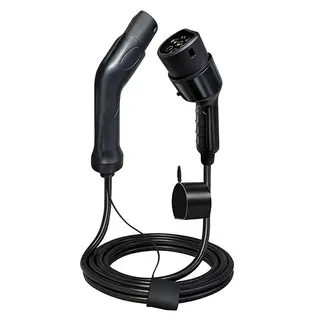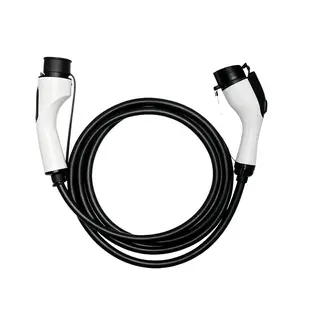With the popularization of electric vehicles, more and more car owners are beginning to enjoy this environmentally friendly and efficient mode of transportation. However, many car owners may overlook some important details during the EV charging process, which not only affect the battery's lifespan but may also pose safety risks. This article will detail the bad habits of electric vehicle charging, helping car owners better protect their car batteries and extend their service life.
In daily use of electric vehicles, controlling charging time is a key step to ensure battery health and extend its lifespan. Many car owners may ignore this point, thinking that as long as the battery is fully charged, it is fine. Little do they know that unreasonable charging time can cause potential damage to the battery.
Many car owners think that the longer the charging time, the fuller the battery will be. However, this idea is incorrect. Generally, an electric vehicle can be fully charged within 8–10 hours, including 1–2 hours of topping charge. If the charging time exceeds 12 hours, it may lead to overcharging, thereby shortening the battery's lifespan. Unless the battery and charger are incompatible, a charger with too low a voltage will make the charging time longer. If the voltage is too high and does not turn to green light, it may result in insufficient or excessive charging.
When the electric vehicle still has one-third of its battery remaining, be sure to charge it. Waiting until the battery is completely drained increases chemical reaction stress, accelerating aging. Therefore, it is recommended to develop a good habit of timely charging and avoid letting the battery get too low.
We also need to pay attention to details during the charging process. The way and habits of charging also have an important impact on battery health and lifespan.
Unless there is something particularly important, it is best not to unplug the power during charging. Frequent small charging actions will prematurely consume charge-discharge cycles and shorten the battery's lifespan. However, there is no need to worry excessively. China has mandatory requirements for power battery life: the number of charge-discharge cycles must exceed 1,000. For a 500 km range electric vehicle, 1,000 charge-discharge cycles mean the vehicle can travel as much as 500,000 km. Normally, a private car will only reach 200,000–300,000 km during its lifecycle. Therefore, normal battery decay can be considered negligible.
After charging is complete, be sure to unplug the charging gun. Whether charging at home or outside, you should stop charging through the vehicle's central control screen or the charging station before unplugging. Pulling the charging gun directly may damage the vehicle's charging system.
Some electric vehicle owners may use makeshift methods such as "flying wires" or "jumper wires" for charging. This behavior carries safety risks and may cause short circuits or even spontaneous combustion. Grounding devices are mainly used to solve the lack of grounding wires, but if there is no grounding wire during charging, there is a risk of short circuits. Charging through a power source without a grounding wire may also allow current to pass through the vehicle body, causing electric shock.
Even if charging time and operation methods are correct, poor environmental conditions may reduce charging efficiency or even cause safety hazards. Therefore, understanding environmental factors affecting charging is crucial.
Electric vehicle batteries are suitable for operation within the range of 0–40°C. In extremely high temperatures, charging the battery at this time may cause the battery temperature to rise excessively, or even result in spontaneous combustion. Therefore, it is recommended to avoid charging in high-temperature environments. Similarly, in low temperatures, battery charging efficiency will decrease and may even damage the battery structure. In winter, you can use the vehicle's battery preheating function (if supported) to ensure that the charging environment temperature is between 0°C and 45°C.
Lightning strikes during thunderstorms can generate huge currents and voltages, causing battery damage. Therefore, it is best not to charge during thunderstorms. Before charging, check whether the charging gun has been soaked in rain, whether there is water accumulation or debris, and wipe it clean before use. When inserting or removing the charging gun, use rain protection.
Choose Appropriate Charging Equipment: Incompatible or low-quality charging equipment may cause unstable charging and even pose safety risks. Always choose manufacturer-recommended or certified equipment. Self-modified charging piles or sockets may pose safety risks, and unprofessional installation may also cause equipment failure or accidents.
Avoid Using High-Power Devices Simultaneously: Using air conditioning or other high-power devices during charging increases battery load, affecting charging efficiency and battery health. Therefore, it is recommended to avoid using these devices while charging.
Control Fast Charging Frequency: Although fast charging is convenient, long-term reliance increases internal battery heat and shortens battery life. It is recommended to limit fast charging to a reasonable frequency, such as only a few times per month. Slow charging is the best choice for daily use, as it has lower current, reduces heat accumulation, and helps extend battery life.
Maintain Battery Charge Within a Reasonable Range: The optimal battery range for electric vehicles is 20%–80%. Avoid letting the battery drop below 20% before charging, and avoid frequently charging to 100%. This effectively extends battery life. Occasionally fully charging for long trips is fine, but do not make it a habit.
Clean Charging Ports and Equipment: The cleanliness and integrity of charging ports and equipment are critical. Regularly check charging interfaces to ensure there is no dust, foreign objects, or moisture. If damage is found, repair or replace it promptly to avoid affecting charging efficiency.
Disconnect After Full Charge: Once fully charged, the battery should be disconnected promptly. Keeping it fully charged for long periods may increase battery burden and shorten its lifespan. Some electric vehicles support setting a charging limit (e.g., automatically stop at 80%), which should be fully utilized.
Avoid Deep Discharge: Some owners habitually use the battery until nearly empty before charging, believing it extends battery life. However, this causes "deep discharge," irreversibly damaging internal battery structure and shortening lifespan. It is recommended to start charging when battery remains at 20%–30% to protect the battery.
Avoid Overcharging: Many owners believe the battery must be fully charged to 100%. In fact, new energy vehicle batteries have intelligent management systems that can charge according to actual needs. For lithium-ion batteries in electric vehicles, it is generally recommended to maintain SOC (state of charge) within 20%–80%. This range is widely recognized as the best maintenance range for lithium-ion batteries, ensuring battery life and performance stability. Therefore, choose the appropriate charge according to actual needs to avoid overcharging.
Properly End Charging: Some owners unplug the charging gun directly when charging ends, which may damage the vehicle's charging system or cause the charger to lock. Do not end charging using the emergency stop button; it is meant to immediately stop the charging pile in emergencies. Pressing it during abnormal situations such as overheating or leakage will cut off power.
Preheat in Low-Temperature Environments: In winter, EVs and hybrids require "warming up." Although new energy vehicles lack traditional engines and gearboxes, their batteries are significantly affected by ambient temperature. At low temperatures, batteries generate more side reactions during charge-discharge, reducing performance. Most new energy vehicles are equipped with battery preheating and thermal management systems, but drivers should still drive steadily for a period after starting in low temperatures to avoid sudden acceleration.
The electric vehicle battery is not only the core component of the vehicle but also one of the most expensive components. Therefore, scientific and reasonable charging not only saves maintenance costs but also makes driving more worry-free. Remember to choose certified equipment, control charging amount and time, avoid frequent fast charging, overcharging, and extreme temperatures. A small improvement in habits may help your EV battery live longer and healthier.
We hope the above content helps car owners better understand the bad habits of electric vehicle charging, develop good charging habits, and ensure driving safety and battery health.



